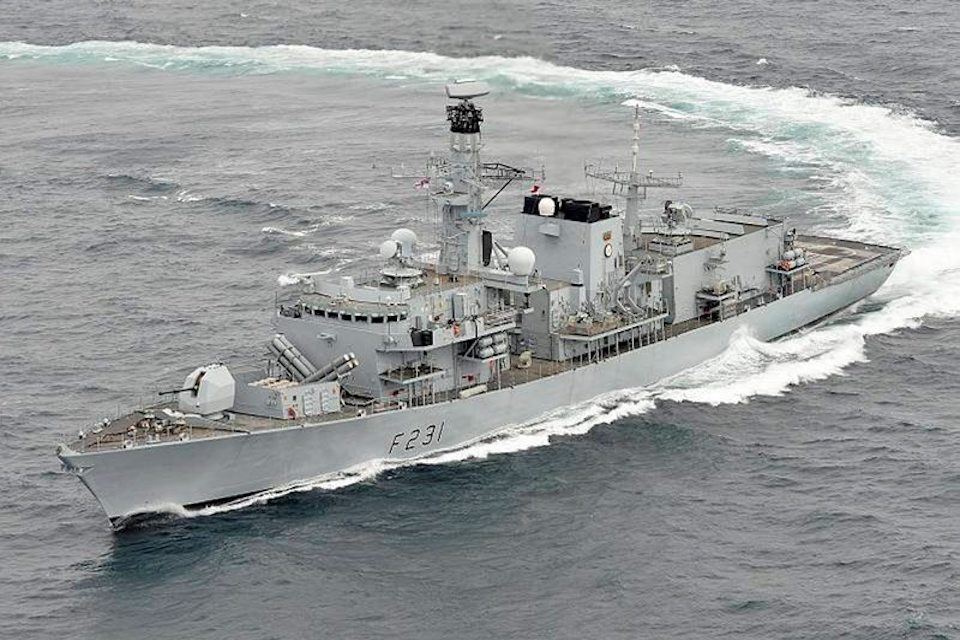News story: Sea Ceptor missile test firing complete at sea
The second ship fitted with Sea Ceptor has also conducted a successful firing to verify the weapon system upgrade.
The new missile defence system will provide UK personnel with a powerful shield against airborne targets – including hostile combat jets and helicopters, as well enemy missiles travelling at supersonic speeds.
The completion of the firing trials from Type 23 frigate HMS Argyll means Sea Ceptor can proceed to the next stage of the acceptance into service with the Royal Navy.
Minister for Defence Procurement Harriett Baldwin said:
In the face of intensifying global threats, cutting-edge systems like Sea Ceptor will keep the UK safe. These successful trials from HMS Argyll mark a major milestone towards the introduction of this world-class missile system into service for the Royal Navy.
Work to develop and install Sea Ceptor across the Royal Navy is also boosting British industry, supporting 600 jobs in the Bristol, Stevenage and Bolton areas.

The first firings of Sea Ceptor were conducted from HMS Argyll at the Hebrides range off the coast of Scotland and involved firing the system to assess its performance against a range of scenarios.
Two sets of trials were conducted by Defence, Equipment and Support (DE&S) and supported by a number of other organisations, lasting around two weeks each.
During the firings the system was first tested against single aerial targets. This was followed by more demanding tests, including a single target engaged by two missiles and a twin firing (two targets, each engaged by a single missile at the same time).
An installation test firing from HMS Westminster – the second ship fitted with Sea Ceptor – took place in November, with each of the Type 23 ships due to carry out installation test firings in due course.
Lieutenant Nick Andrews, HMS Westminster’s Anti-Air-Warfare Officer, said:
HMS Westminster managed to explore the real potential of the system during her training and to say it is a real game changer is an understatement. Unlike its predecessor, the system is capable of defending ships other than Westminster herself. Whether it’s engaging multiple air threats or fast incoming attack craft, Sea Ceptor represents a massive capability upgrade for the Type 23 frigate.
Designed and manufactured by MBDA in the UK, Sea Ceptor is being fitted to replace the Sea Wolf weapon system on the Type 23 frigates and will provide the same capability for the Royal Navy’s future Type 26 Frigates.
Sea Ceptor defends escort vessels within a maritime task group, such as for the new Queen Elizabeth Class aircraft carriers, and with HMS Argyll due to deploy to Japan next year, the trials successfully showcased the short range capabilities of the new defence system. Another Type 23, HMS Sutherland, is due to deploy to Australia in the New Year.

The system uses a new UK-developed missile, the Common Anti-air Modular Missile or CAMM, that is capable of reaching speeds of up to three times the speed of sound, and will have the ability to deal with multiple targets simultaneously, protecting an area of around 500 square miles (1,300 square kilometres) over land or sea.
Sea Ceptor supports around 600 MBDA jobs and its supply chain in key locations across the UK such as Bristol, Stevenage and Bolton.
Richard Smart, Director Weapons, for the MOD’s procurement organisation Defence Equipment and Support, which is based at MOD Abbey Wood in Bristol, said:
These trials are a significant step in getting the Sea Ceptor weapon system to acceptance and a great example of how important live trials are in helping us to understand a new military capability before using it in operational service. The success of the trials is testimony to the hard work put in by the DE&S project team and the working relationship they have with industry.
The results of the firings are now going through extensive analysis; our assessment so far is positive and shows how Sea Ceptor is capable of protecting both the ship which fired it and other ships in its task group, which could include the UK’s two new Queen Elizabeth Aircraft Carriers.